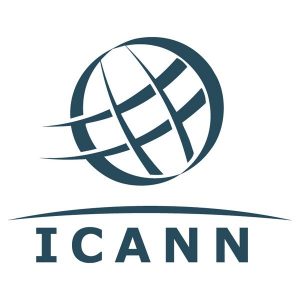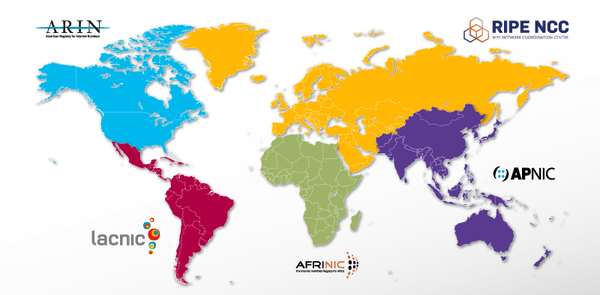
This Week in Getting Hacked: OnePlus Gets Pwned Edition
January 25, 2018
This Week in Getting Hacked: All Allegiance to the Mining Botnet Overlords
February 9, 2018Welcome to part 3 of our episodic journey through the history of IP addresses. We had the origin story, and then the innovation and improvement, and now we’ll take a look at just how people organized, distributed, and recorded who got what IP address. You can find Part 1 of the series here and Part 2 here.
At this point in our series, the Internet is humming around the world and people—even if they’re not every-day users—are beginning to accept it as a crucial part of everyday life.
For the most part, however, the Internet is being utilized the most by businesses and universities and not so much by the normal public.
Therefore, the larger corporations were actually given a slew of IP addresses and many of them had no clue what to do with them.
There are hundreds, if not dozens of hundreds, of unused or barely used IP addresses that some companies don’t even realize they still have.
But we’re getting ahead of ourselves.
Let’s start with how IPs were allocated initially with InterNIC.
InterNIC was established in 1972 for reasons other than to help with IP registration, obviously. It was run by the Stanford Research Institute (SRI) that we’ve talked about before.
From 1993-98, InterNIC was responsible for domain name allocations (and DNS) and was comprised of three large Internet-ey companies: Network Solutions (provided registration services), AT&T (provided directory and database services), & General Atomics (provided information services). This triumvirate provided the means necessary to register IPs to non-military persons / organizations.
But it was sloppy. The world needed a better system. Meet ICANN.
The Internet Corporation for Assigned Names and Numbers (ICANN)
It’s acronym and initialism city here today. The Internet Assigned Numbers Authority (IANA) was established along with ARPANET (the subject of Part 1 of this series) and was run by Jon Postel and Joyce K. Reynolds at UCLA and at the University of Southern California’s Information Sciences Institute.

Postel referred to himself as the “czar of socket numbers.” Seriously, this guy worked behind the scenes registering domain names and IP addresses since the inception of the ARPANET and referred to this as a “side task” to his research work. That’s crazy.
As you can imagine, it became a task too large for one person and in 1998 the U.S. Department of Commerce proposed the establishment of a brand-new organization to handle IANA functions. So, the National Telecommunications and Information Administration (NTIA) issued “A Proposal to Improve the Technical Management of Internet Names and Addresses.”
This proposal included designs to privatize the management of Internet names and addresses in a way that better facilitated global participation of the Internet.
Therefore, The Internet Corporation for Assigned Names and Numbers (ICANN) was formed with Jon Postel acting as its first Chief Technology Officer.
ICANN Functions
According to ICANN’s original bylaws, it would be delegated into three organizations:
- Address Supporting Organization
- Domain Name Supporting Organization
- Protocol Supporting Organization
These organizations would be financially independent of ICANN and were to design, develop, and recommend policies within their scopes.
But this is a series on IP addresses right!? So let’s focus on the Address Supporting Organization.
Regional Internet Registry (RIR)
The Regional Internet Registries nowadays consist of 5 RIRs:

- African Network Information Center (AFRINIC), for Africa
- American Registry for Internet Numbers (ARIN), for the United States, Canada, and Antarctica
- Asia-Pacific Network Information Centre (APNIC), for Asia, Australia, & New Zealand
- Latin America and Caribbean Network Information Centre (LACNIC), for Latin America
- Réseaux IP Européens Network Coordination Centre (RIPE NCC), for Europe, the Middle East, and Central Asia
For the purpose of this article, however, we’re going to focus on, for my money, the most influential RIR established: ARIN.
The American Registry for Internet Numbers (ARIN)

Let’s talk about something real quick. What really is an IP? Is it property? A form of Real Estate? What actual value do they really have?
According to ARIN, IPs are not purchased or sold, but exchanged between two organizations.
But, come on, we know the truth.
If we revisit an older article of ours, we see that there are two ways to acquire an IP: a direct allocation from ARIN, or assignment by an ISP (which, of course, includes a transaction fee).
In a direct allocation, ARIN specifies that the IPs will be later used for the purpose of distribution.
Getting IPs assigned by the ISP means that the IPs have already been allocated and are for specific use by another ISP or by the end-user for use within their own Internet space.
This process includes a valid, monetary transaction.
Think of registering a domain with a registrar. For example, GoDaddy includes 3 dedicated IPs with every server plan.
What are you really buying when you’re buying an IP, though?
You’re being charged for the use of the ISPs network to host the IP, rather than really being charged for the IP itself (which, of course still has value).
But how to large companies like Google and Amazon keep getting IPs? Surely they don’t go through an ISP to get their swaths of IPs.
In these instances, companies go directly through ARIN. They will submit a reason for the IPs and if ARIN approves they will receive the IPs directly.
Again, there is no fee for the actual IP, just for the registration, transfer, maintenance, and recording.
A cool way to track all the IPs registered all over the world is to play around with Hurricane Electric’s BGP Toolkit: https://bgp.he.net/.
Imagine all the domains around the world and all the IPs associated with them. Now imagine you’re Jon Postel and meticulously recording all of this yourself. It’s no wonder a better system is needed.
All the IP transfers are recorded and public record and all five RIRs work with each other to form a map of IPs all over the world.
It’s truly an amazing system.
But as you’ve probably heard, IPv4 is becoming a thing of the past and certain IPv4s are becoming increasingly trickier to get.
We’ll explorer the future of IPs in the next part of our series.

